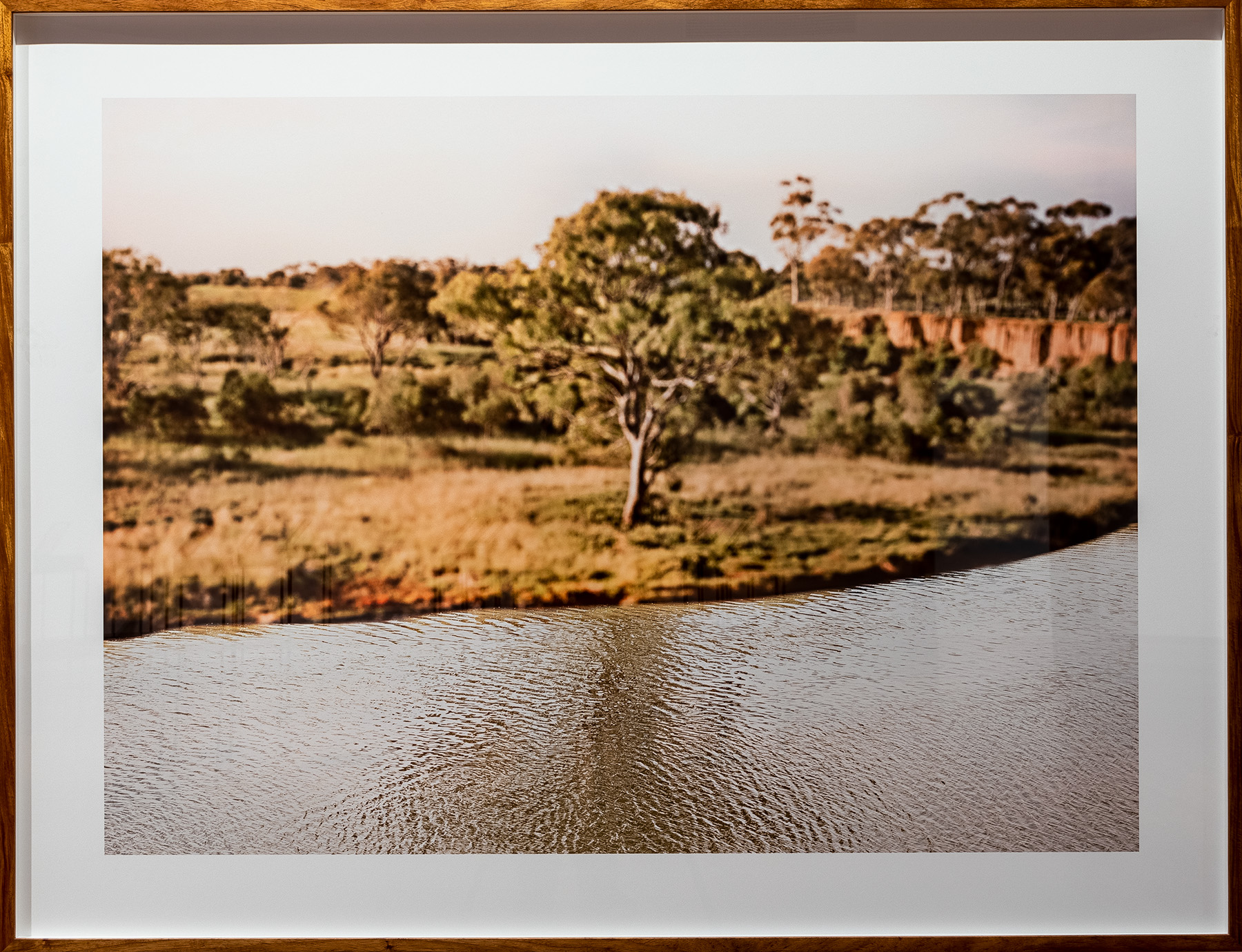
Peta Clancy, Fissures in Time 4
Audio description
This photographic work is 91 centimetres high and 124 centimetres wide. It is housed in a medium-brown frame and has 5 centimetres of white matting board between the edge of the photograph and the edge of the frame.
The photograph itself depicts a brown river with lots of ripples in the water, and a riverbank and beyond. The riverbank has red dirt and light tufted grass, and there is one large gum tree standing in the middle of the frame, about 5m from the riverbank. There are smaller bushes and trees dotted in the background, and eventually, you see a red cliff off into the distance which has what looks like a forest of different gum trees. The earth looks dry and the sun bright on the grass and trees.
The river seems more in focus than the background of the riverbank. This is because the artist had taken an image of the background at an earlier date, and then printed that photograph. She then tore the bottom part of the printed photograph off, set it up in the original environment in which she’s shot the first photograph, and used her camera to shoot both the printed image and the river at once. Because there were two focal points, the camera focused on the river, and the image in front – the riverbank and landscape – became blurred. This indicates that different points in time and different points of view impact on our interpretation not only of an image, but of place.
The photograph is part of a series which is also shown on the other part of the wall in a square grid – they all depict similar scenes. The artist notes that she based these photographs on an archival account of a massacres on Wadda-wurrung Country, along the Werra-bee River. During her research she found an Aboriginal Massacre Map put together by the Koorie Heritage Trust in 1988. The map records violence perpetrated towards Aboriginal peoples in Victoria, by Europeans during an 18-year period between 1836 and 1853. There were over 60 massacre spots. The places that Peta shot these photographs in weren’t necessarily on that map, but it influenced her thinking on the impact of these violences on both people and land across time. She says that her “hope is that when people look at the Fissures in Time photographs, they experience a view of Country, but also a feeling that the image is not quite right”.
Through her photographic practice, Peta explores hidden histories of colonisation. In 2018 she was awarded the inaugural “Fostering Koorie Art and Culture” grant from the Koorie Heritage Trust. For this project Clancy collaborated with the Dja Dja Wurrung community to create a body of work investigating massacre sites on local country.
–
Artwork credit is: Peta Clancy (from the Banger-rang Nation, born 1970), Fissures in Time 4, 2017. Inkjet pigment print. Courtesy of the RMIT University Art Collection.
